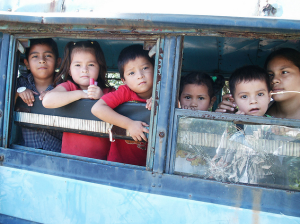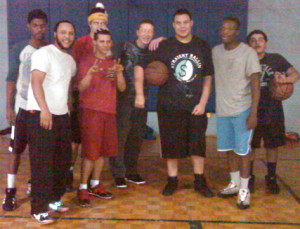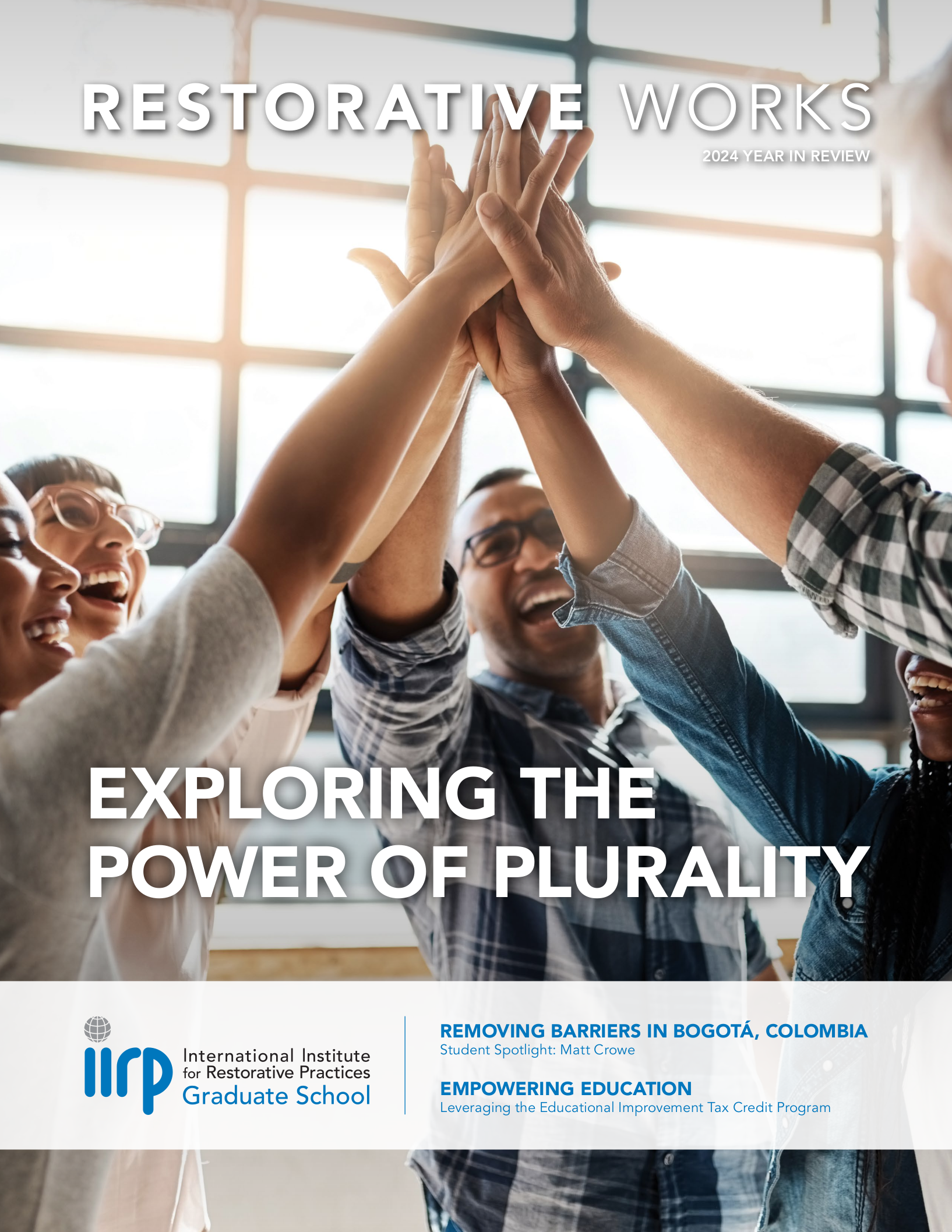News & Announcements
- Details
- Written by Joshua Wachtel
 Public Counsel Law Center has just published a downloadable toolkit and launched a web site aimed at revising discipline policies in schools in California. Beginning with the statement, "During the 2010-2011 academic year, California schools issued more suspensions than diplomas," the toolkit goes on to argue the need to end ineffective zero-tolerance policies and employ alternative approaches.
Public Counsel Law Center has just published a downloadable toolkit and launched a web site aimed at revising discipline policies in schools in California. Beginning with the statement, "During the 2010-2011 academic year, California schools issued more suspensions than diplomas," the toolkit goes on to argue the need to end ineffective zero-tolerance policies and employ alternative approaches.
The "Good News" section of the toolkit (which can also be found online here) begins with a section about restorative justice and restorative practices. It says:
"Restorative Practices, which builds upon Restorative Justice and applies in the school context, is used to build a sense of school community and resolve conflict by repairing harm and restoring positive relationships through the use of regular 'restorative circles' where students and educators work together to set academic goals, develop core values for the classroom community and resolve conflicts."
- Details
- Written by Joshua Wachtel
 Photo by FMSC at Flickr Creative CommonsMiguel Tello, Representative for IIRP Latinoamérica, has helped to launch an exciting restorative practices program in El Salvador.
Photo by FMSC at Flickr Creative CommonsMiguel Tello, Representative for IIRP Latinoamérica, has helped to launch an exciting restorative practices program in El Salvador.
Miguel also directs the Strachan Foundation, a family foundation that supports educational organizations throughout Central America with small grants. Four Strachan Foundation grantees in El Salvador will also receive restorative practices training, including Fe y Alegria, a respected NGO (non-governmental organization), which is part of a federation of 19 NGOs in Latin America, Spain and Chad founded by Jesuits, that works with very poor schools in those areas.
In 2011 Miguel provided introduction to restorative practices and circles trainings to employees of Fe y Alegria. Then in 2012 Miguel facilitated two crucial restorative circles with staff in two different schools that Fe y Allegria works with, the El Rodeo I school in Ahuachapan and Los Laureles school in Acajutla. The schools are located in rural areas characterized by poverty, violence and gang activity. There is a great deal not only of student conflict, but also staff conflict. Yet the restorative circles made an impact, and the teachers found them transformative. According to Miguel, one teacher said afterwards, “This is the first time we’ve been able to have a conversation with one another.”
- Details
- Written by Joshua Wachtel

Prevention Researcher devotes the entire contents of its February 2013 issue to the topic of "Restorative justice: Changing how we approach crime and wrongdoing." Prevention Researcher has made the entire issue viewable in digital format on line.
Relevant links can be found embedded in the following text from associate editor Colette Kimball's blog post, "Restorative justice: The evolution of an issue":
"For our issue, we found an excellent author, Avery Calhoun, to write the introduction, which provides a brief history and gives us a foundation. Then, we feature two case studies – one set in a school and one in a juvenile justice program – to show restorative justice at work.
- Details
- Written by Laura Mirsky
 Boys at the Southside Bethlehem (PA, USA) Boys & Girls ClubTwo high school kids were on the verge of a serious fight on the basketball court, but they decided to talk it out instead. They weren’t afraid to use their words instead of their fists. They’d learned about restorative practices at Liberty High School, in Bethlehem, Pennsylvania, USA, and took it with them out into the world. Winston Alozie, program director of the Boys & Girls Clubs of Bethlehem, told the story:
Boys at the Southside Bethlehem (PA, USA) Boys & Girls ClubTwo high school kids were on the verge of a serious fight on the basketball court, but they decided to talk it out instead. They weren’t afraid to use their words instead of their fists. They’d learned about restorative practices at Liberty High School, in Bethlehem, Pennsylvania, USA, and took it with them out into the world. Winston Alozie, program director of the Boys & Girls Clubs of Bethlehem, told the story:
"I was in the Bethlehem Area School District Superintendent’s Committee on Diversity meeting, and people were discussing how restorative practices are working in the district. There had been a year of restorative practices implementation at Liberty and Freedom high schools in Bethlehem at this time. The NAACP was in on the meeting, too, and they were asking, 'Does it work?' When I heard this, I was eager to share how I had seen the practices working outside the classroom.
 Winston Alozie, program director of the Boys & Girls Clubs of Bethlehem"We have a large gymnasium where I see 80 to 100 kids a day, mostly high school students. They love to play basketball. One afternoon I walked into the gym and the kids were on the verge of a fight. Boys were pushing and yelling — taking sides and gathering around two boys in the center. Some of these kids have gang affiliations, so I was afraid this could be bad. But what could have turned into a big brouhaha did not because the kids used restorative practices.
Winston Alozie, program director of the Boys & Girls Clubs of Bethlehem"We have a large gymnasium where I see 80 to 100 kids a day, mostly high school students. They love to play basketball. One afternoon I walked into the gym and the kids were on the verge of a fight. Boys were pushing and yelling — taking sides and gathering around two boys in the center. Some of these kids have gang affiliations, so I was afraid this could be bad. But what could have turned into a big brouhaha did not because the kids used restorative practices.
"One boy was offended by what another boy had said to him. They were yelling back and forth, when one boy suddenly said, 'Look, I don’t want to fight. I don’t like what you said; you hurt my feelings.' Then the other boy said, 'You’re right. I’m sorry. I didn’t mean to hurt your feelings. Let’s not do this.'
"I was so proud of these kids: that high school students could behave that way. One kid was able to say how the other kid had affected him, and the other kid was able to take responsibility and apologize. They weren’t afraid of being seen as a wimp or less of a man. And there was nobody standing over them and telling them to do this; it was their own idea.
"It was clear to me they had learned how to do this from the restorative practices and circles they had learned at Liberty. These kids are learning how to be compassionate and empathetic, how to be in touch with their feelings and the feelings of others. I had never seen anything like this in nine years working at the Boy’s and Girl’s Clubs.
"I have my bachelor’s degree in developmental psychology. When I first heard about restorative practices I thought, OK, but how’s it going to work with regular kids? When I saw what those boys did it really touched me. If you can express yourself effectively with words, it’s a beautiful thing. I hope we can incorporate these practices into the Boy’s and Girl’s Clubs. I think it would help us with our mission to help our kids reach their full potential as productive, caring, responsible citizens."
- Details
- Written by Joshua Wachtel
Restorative justice has been receiving a lot of attention lately, due to Paul Tullis’s January 4 New York Times Magazine article, “Can Forgiveness Play a Role in Criminal Justice?”
This story about a restorative justice conference following the murder of a young woman by her boyfriend was also covered on the January 5 episode of the Today show, “Parents who forgave their daughter's killer: It 'frees us'.”
Both the Times and the Today stories do their audience a disservice by dwelling on forgiveness as the apparent reason for restorative justice. Forgiveness is neither an expectation nor a goal of restorative justice. Forgiveness may be a by-product, but the notion that a crime victim should forgive an offender imposes unrealistic and potentially hurtful demands on a crime victim.
- Details
- Written by Joshua Wachtel
 Last Thursday EdWeek's Bridging Differences blog by Deborah Meier posted the first of what it says will be a month of guest blogging by Alfie Kohn. Wikipedia describes Kohn as an "author and lecturer who has explored a number of topics in education, parenting, and human behavior. ... [H]e calls into questions [such practices] as the use of competition, incentive programs, conventional discipline, standardized testing, grades, homework, and traditional schooling." In this first post at EdWeek, Kohn writes a critique of punishment:
Last Thursday EdWeek's Bridging Differences blog by Deborah Meier posted the first of what it says will be a month of guest blogging by Alfie Kohn. Wikipedia describes Kohn as an "author and lecturer who has explored a number of topics in education, parenting, and human behavior. ... [H]e calls into questions [such practices] as the use of competition, incentive programs, conventional discipline, standardized testing, grades, homework, and traditional schooling." In this first post at EdWeek, Kohn writes a critique of punishment:
- Details
- Written by Joshua Wachtel
Howard Zehr, distinguished professor of restorative justice at Eastern Mennonite University, sent a note of response to some of the negative responses by restorative justice advocates to the NYTimes Magazine article that appeared a few weeks ago. He writes:
The responses by restorative justice advocates to the NYT article on justice and forgiveness are partly a result of some errors in the story and to things that were left out. Readers may be interested in this interview about the case with Sujatha Baliga who facilitated the case. And if it's helpful to know, I was the one that connected Sujatha to the families and advised behind the scenes along the way. There are of course many skilled facilitators for serious violence dialogues. What this case required at the pre-plea stage was an experienced attorney rooted in restorative justice. Sujatha ended up also being the facilitator because the families insisted on it.
- Details
- Written by Joshua Wachtel
Here's a redux of IIRP UK & Ireland's 2012 one-day conference in Swansea, Wales, in November.
Find out about IIRP UK & Ireland's Summer 2013 conference here.
- Details
- Written by Joshua Wachtel
Marilyn Armour and Stephanie Frogge, restorative justice practitioners, respond the the New York Times Magazine's story a few weeks ago that told the story of a restorative conference for the families of both victim and offender after a young man murdered his fiance. They write:
As restorative justice practitioners, our initial reaction to the article was one of jubilation. “A piece about restorative justice in a major newspaper … they like it, they really like it!” But our excitement quickly dimmed.

Restorative Works Year in Review 2024 (PDF)
All our donors are acknowledged annually in Restorative Works.


